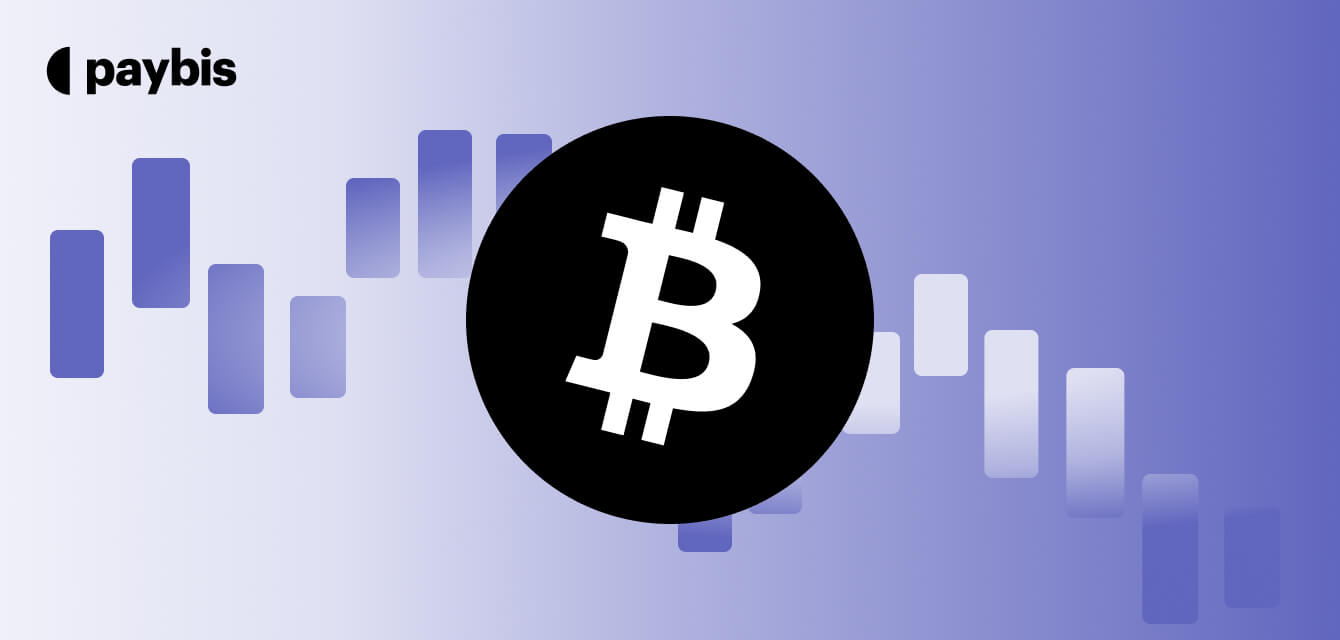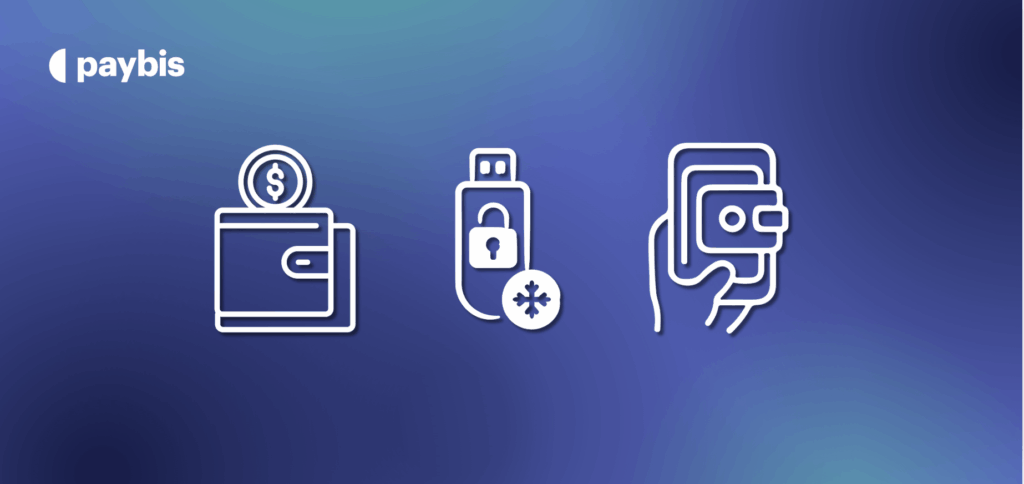What is a Spot Bitcoin ETF?
Bitcoin is the first fully decentralized cryptocurrency and the biggest one by market cap. People who want to dip their feet in the waters of crypto tend to start with Bitcoin. But getting started with Bitcoin can be like navigating a maze, with tricky concepts like private keys and seed phrases.
Bitcoin ETFs provide a familiar environment where investors can enjoy the price action of Bitcoin while staying within the bounds of traditional finance. This is also beneficial for institutions holding Bitcoin in their balance sheets.
This article will help you understand what spot Bitcoin Exchange Traded Funds (ETFs) are, how they are fuelling Bitcoin adoption and what is their impact on the market.
Table of contents
- What is Bitcoin ETF (Spot)?
- List of Approved Bitcoin Spot ETFs
- How Does a Spot Bitcoin ETF Work?
- Why Invest in Spot Bitcoin ETFs Rather Than Holding BTC Directly?
- Pros and Cons of a Spot Bitcoin ETF
- How is Bitcoin Spot ETF different from a Bitcoin Futures ETF?
- How to Invest in a Spot Bitcoin ETF? Guide to Getting Started
- Conclusion
What is Bitcoin ETF (Spot)?
A Spot Bitcoin ETF (Exchange Traded Fund) is a financial instrument that tracks the current, or “spot,” price of Bitcoin.
On 10 January 2024, history was made. The US Securities Exchange Commission (SEC), a regulatory body known for its anti-crypto stance, approved all 11 Bitcoin spot ETF applications.
Unlike other Bitcoin-related investments, a spot BTC ETF allows investors to get involved with Bitcoin through the stock market, without actually buying and holding the cryptocurrency themselves.
Since their launch, Bitcoin ETFs are witnessing a huge inflow of capital into them, which is partially contributing to a surge in BTC price.
List of Approved Bitcoin Spot ETFs
Now you know what is Bitcoin ETF. Below is the list of SEC-approved spot Bitcoin ETFs from 10 January 2024. They are listed based on the expense ration (from lowest to highest):
ETF Name |
Holding Company |
Fees (Expense Ratio) |
Custodian |
| Bitwise Bitcoin ETF | Bitwise Asset Management Inc. | 0.35% | NYDIG |
| iShares Bitcoin Trust | BlackRock Fund Advisors, LLC | 0.40% | Northern Trust Corporation |
| Fidelity Wise Original Bitcoin Fund | Fidelity Management & Research Company | 0.40% | Fidelity Digital Assets Services LLC |
| WisdomTree Bitcoin Fund | WisdomTree Investments, Inc. | 0.47% | Gemini Trust Company LLC |
| Invesco Galaxy Bitcoin ETF | Invesco Ltd. | 0.49% | Fidelity Digital Assets Services LLC |
| Franklin Bitcoin ETF | Franklin Templeton Investments Corp. | 0.50% | U.S. Bank |
| VanEck Bitcoin Trust | VanEck Associates Corporation | 0.65% | State Street Bank and Trust Company |
| ARK 21Shares Bitcoin ETF | ARK Investment Management LLC | 0.75% | Coinbase Custody Trust Company LLC |
| Valkyrie Bitcoin Fund | Valkyrie Investments Inc. | 0.80% | BitGo Inc. |
| ProShares Bitcoin Strategy ETF | ProShares Capital LLC | 0.95% | Gemini Trust Company LLC |
| Grayscale Bitcoin Trust | Grayscale Investments LLC | 2.00% | Coinbase Custody Trust Company LLC |
How Does a Spot Bitcoin ETF Work?
A Spot Bitcoin ETF (Exchange Traded Fund) operates by closely mirroring the current price of Bitcoin, offering investors a way to partake in Bitcoin investment through traditional financial systems.
The process can be broken down into four:
- Creation of the ETF
- Trading Mechanism
- Tracking BTC Price
- Security and Custody
Creation of the ETF
- Establishment by an Issuer: A financial institution or fund manager, known as the issuer, creates the ETF. They structure it to track the performance of Bitcoin’s spot price.
- Regulatory Approval: Before it can be offered to investors, the ETF must receive approval from financial regulatory bodies, like the SEC in the US. This ensures it meets specific standards and guidelines for safety and transparency.
- Asset Backing: The issuer then backs the ETF with actual Bitcoin holdings. This means they purchase and hold a certain amount of Bitcoin, which corresponds to the ETF’s shares.
Trading Mechanism
- Creation and Redemption of Shares: Authorized participants (usually large financial institutions) are responsible for creating and redeeming ETF shares. They do this by either delivering the corresponding amount of Bitcoin to the fund (to create shares) or exchanging shares of the ETF for Bitcoin (to redeem shares).
- Exchange Listing: The ETF is listed on a stock exchange, similar to how company stocks are listed. This listing allows any investor with a brokerage account to buy and sell shares of the ETF.
- Market Price vs. Net Asset Value (NAV): The ETF’s market price fluctuates throughout the trading day, based on supply and demand among investors. Ideally, this market price should stay close to the ETF’s NAV, which is the total market value of the Bitcoins held by the ETF divided by the number of outstanding shares.
Tracking Bitcoin’s Price
- Price Correlation: The value of the ETF is designed to closely follow the real-time price of Bitcoin. If the price of Bitcoin rises or falls, the value of the ETF should move in tandem.
- Premiums and Discounts: Sometimes, the ETF may trade at a premium (higher than the NAV) or a discount (lower than the NAV), depending on investor sentiment, market conditions, and the efficiency of the creation/redemption mechanism.
Security and Custody
- Custody of Bitcoin: The issuer must ensure secure storage of the Bitcoin holdings, usually using a combination of cold (offline) and hot (online) wallets.
- Risk Management: The issuer implements security measures and risk management strategies to protect the Bitcoin holdings from theft, hacking, or other risks.
Why Invest in Spot Bitcoin ETFs Rather Than Holding BTC Directly?
When you invest in a spot BTC ETF, you are merely buying into the price of Bitcoin but not holding the cryptocurrency itself. Therefore, you cannot engage with other web3 use cases like DEXs, DeFi loans, and more.
So, why would an investor want to allocate their funds to a Bitcoin spot ETF when there’s the option of buying Bitcoin directly from secure platforms like Paybis?
There are 5 major reasons for this:
- ETFs make it easier for investors to access BTC’s price action
- ETFs conform strictly to local regulations
- ETFs provide a familiar investing landscape
- ETFs act as a vehicle for traditional investors to diversify
- ETFs mitigate risks associated with crypto and DeFi
Ease of Access
For investors who are unfamiliar with the intricacies of buying, storing, and managing Bitcoin, a spot Bitcoin ETF provides a more accessible entry point. They can invest in Bitcoin through their existing brokerage accounts, without needing to navigate cryptocurrency exchanges or set up digital wallets.
Regulatory Oversight
Spot Bitcoin ETFs operate within the regulatory framework of traditional financial markets. This provides investors with a level of oversight and protection that may be lacking in the unregulated world of cryptocurrency exchanges. Regulatory compliance ensures transparency, investor disclosures, and adherence to established market standards.
Reduced Complexity
Directly owning Bitcoin involves technical complexities, such as securely storing private keys and managing digital wallets. By investing in a spot Bitcoin ETF, investors can bypass these complexities, as the fund handles the custody and security of the underlying Bitcoin holdings on their behalf.
Liquidity and Diversification
Spot Bitcoin ETFs typically offer high liquidity, with shares traded on major stock exchanges throughout the trading day. This liquidity provides investors with the flexibility to buy and sell shares easily, without the potential liquidity constraints often associated with buying and selling Bitcoin directly. Additionally, investing in a spot BTC ETF allows for diversification within a broader investment portfolio, as opposed to concentrating all funds on a single asset.
Risk Mitigation
Spot Bitcoin ETFs may offer risk mitigation benefits compared to owning Bitcoin directly. The ETF structure diversifies custody and security risks across multiple institutional custodians, reducing the risk of loss due to theft or operational failures associated with individual wallet management.
Pros and Cons of a Spot Bitcoin ETF
The spot Bitcoin ETF is a new investment vehicle in traditional finance. Like any other wealth-building tool, the spot Bitcoin ETF, too, has its fair share of advantages and disadvantages. Some of them are listed here.
Pros |
Cons |
| Easy access for investors | Limited control over underlying assets |
| Regulated and compliant | Management fees may reduce returns |
| Reduced technical complexity | Potential tracking error |
| High liquidity | Subject to market volatility |
| Diversification within portfolio | Dependency on ETF issuer’s performance |
| Tax advantages in some jurisdictions | Limited availability in certain regions |
| Lower security risks | Counterparty risk |
| Potential for lower transaction costs | Limited exposure to Bitcoin ecosystem |
| Flexibility in buying and selling shares | May not fully capture Bitcoin’s upside potential |
| Transparency in operations | Market manipulation risk |
How is Bitcoin Spot ETF different from a Bitcoin Futures ETF?
A Bitcoin futures ETF is an exchange-traded fund that invests primarily in futures contracts linked to the Bitcoin price. These crypto futures ETFs allow investors to gain exposure to Bitcoin’s price movements without directly owning the cryptocurrency.
While both seem similar, they are very different and futures ETFs are known to be riskier than spot ETFs.
Spot Bitcoin ETF
- Tracks the real-time, or “spot,” price of Bitcoin.
- Invests directly in physical Bitcoin, holding the cryptocurrency as its underlying asset.
- Provides investors with direct exposure to the price movements of Bitcoin without the need for futures contracts.
- Typically appeals to investors seeking simplicity, regulatory oversight, and ease of access to Bitcoin.
Futures Bitcoin ETF
- Tracks the price of Bitcoin futures contracts, which are agreements to buy or sell Bitcoin at a predetermined price at a specified future date.
- Does not hold physical Bitcoin; instead, it invests in futures contracts traded on regulated futures exchanges.
- Can offer leverage, allowing investors to potentially magnify their returns or losses compared to the spot price of Bitcoin.
- Appeals to investors looking to speculate on Bitcoin’s future price movements, hedge existing Bitcoin positions, or gain exposure to Bitcoin without directly owning the cryptocurrency.
How to Invest in a Spot Bitcoin ETF? Guide to Getting Started
You can get started with investing in a spot Bitcoin ETF in just 5 steps.
Choose an ETF
Research the available Spot Bitcoin ETFs (as of March 2024, there are 11 options), considering factors like fees, expense ratios, and assets under management. Look at the Bitcoin ETF ticker to make sure you’re picking the right one.
Open a Brokerage Account
If you don’t already have one, open an account with a brokerage platform that allows trading the chosen ETF. Ensure the platform supports trading ETFs and specifically offers the ETF you’ve selected.
Fund Your Account
Deposit money into your brokerage account using available methods like bank transfers or wire transfers. The amount will depend on the current price of the ETF and the number of shares you want to purchase.
Place Your Order
- Navigate the brokerage platform’s trading interface and search for the chosen ETF by its ticker symbol.
- Specify the desired number of shares and the order type (e.g., market order or limit order).
- Review the order details and submit it for execution.
Monitor Your Investment
Once your order is filled, track the performance of your ETF shares within your brokerage account. Remember, Bitcoin and the associated ETFs are volatile, so be prepared for price fluctuations.
Conclusion
The spot Bitcoin ETFs are a big leap forward for the entire cryptocurrency industry that has potentially set the tone for a long bull run.
The approval of these ETFs essentially indicates a ‘head nod’ by major government bodies, thus encouraging institutions to get onboard the crypto bandwagon.
On the flip side, there is the risk of institutions cannibalizing Bitcoin and making it more centralized due to their large buying power.
If you found this guide to spot BTC ETFs useful, checkout the Paybis blog to read more such articles.
Disclaimer: Don’t invest unless you’re prepared to lose all the money you invest. This is a high‑risk investment and you should not expect to be protected if something goes wrong. Take 2 mins to learn more at: https://go.payb.is/FCA-Info



